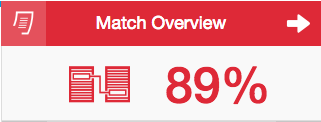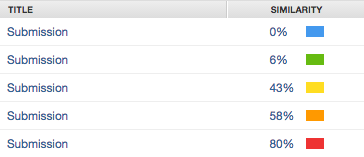Your Turnitin guidance is moving!
We’re migrating our content to a new guides site. We plan to fully launch this new site in July. We are making changes to our structure that will help with discoverability and content searching. You can preview the new site now. To help you get up to speed with the new guidance structure, please visit our orientation page .
Though we're known for scanning submissions for plagiarism, Turnitin actually does not check for plagiarism in your work. What we actually do is check your submissions against our database, and if there are instances where your writing is similar to, or matches against, one of our sources, we will flag this for your instructor to review. Our database includes billions of web pages: both current and archived content from the internet, a repository of works other students have submitted to Turnitin in the past, and a collection of documents, which comprises thousands of periodicals, journals, and publications.

It is perfectly natural for an assignment to match against some of our database. If you've used quotes and referenced correctly, there will be instances where we will find a match and that is totally OK! The similarity score simply highlights any matching areas in your paper so your instructor can use this as an investigative tool to determine if the match is or is not acceptable.
Similarity Reports provide a summary of matching or highly similar text found in a submitted paper. When a Similarity Report is available for viewing, a similarity score percentage will be made available. Similarity Reports that have not yet finished generating are represented by a grayed out icon in the Similarity column. Reports that are not available may not have generated yet, or assignment settings may be delaying the generation of the report.

Overwritten or resubmitted papers may not generate a new Similarity Report for a full 24 hours. This delay is automatic and allows resubmissions to correctly generate without matching to the previous draft.
The color of the report icon indicates the similarity score of the paper, based on the amount of matching or similar text that was uncovered. The percentage range is 0% to 100%. The possible similarity ranges are:
- Blue: No matching text
- Green: One word to 24% matching text
- Yellow: 25-49% matching text
- Orange: 50-74% matching text
- Red: 75-100% matching text
Students, be sure to consult your instructor's syllabus, contact them directly, or review your institution's overarching policies on what counts as an acceptable similarity score before you submit a paper. Every school, instructor, or assignment could very well have a different amount of matching text that is considered acceptable.
Was this page helpful?
We're sorry to hear that.
